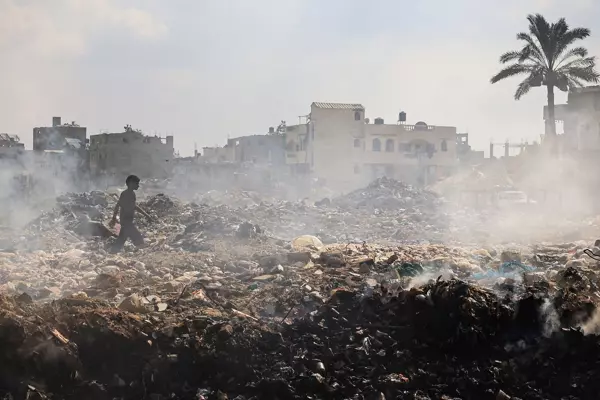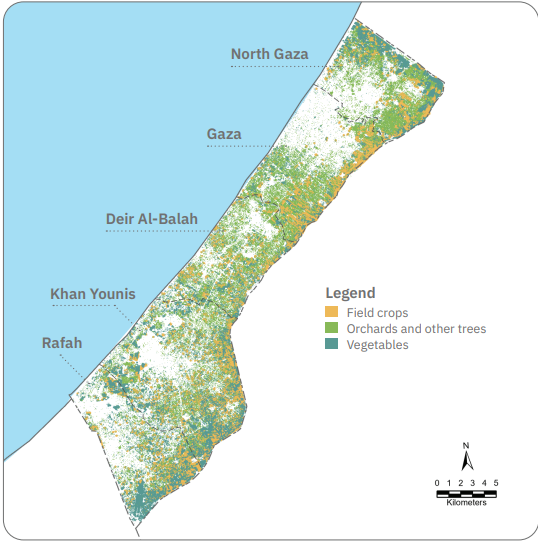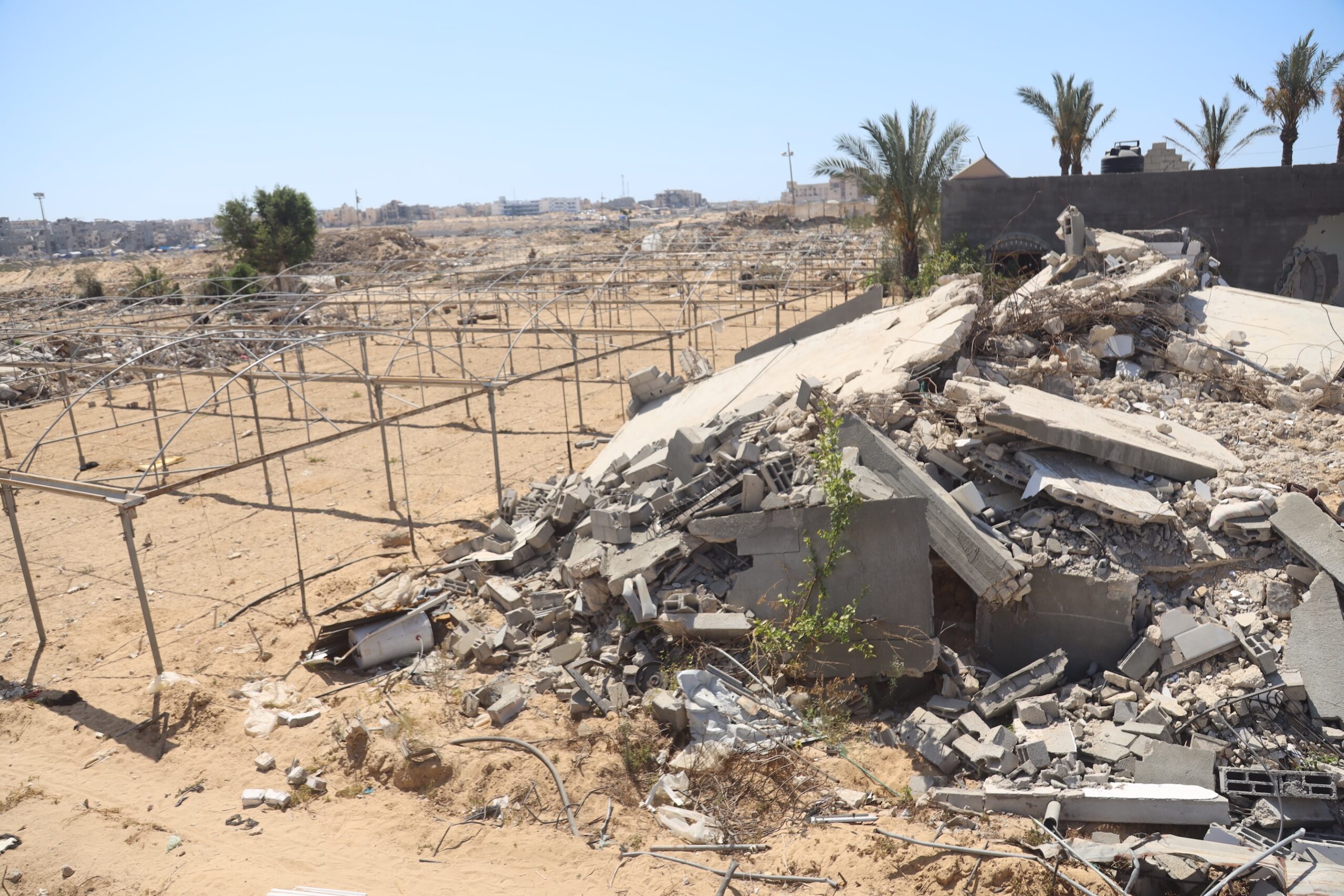When Bombs Fell Silent: Israel’s Hidden War Against Gaza’s Land, Air, and Water
As Gaza’s skies grow quiet, its soil, water, and air remain under attack; a silent war that outlives the ceasefire;

By Yasmin Abu Shammala
In Gaza, farmland once green with olives and strawberries now lies in ashes. The air reeks of burning plastic and toxic dust, the soil glows with unexploded metal, and the sea is slick with sewage. After two years of relentless Israeli bombardment, Gaza is no longer just wounded; it is poisoned. What unfolded here is not only a humanitarian disaster, but an environmental genocide.
The soil, water, and air; the very systems that sustain life, have been destroyed. Tens of thousands are dead, and the land itself has been rendered uninhabitable.
What occurred in Gaza was not merely a humanitarian disaster; it was a deliberate environmental genocide, an intentional effort that destroyed the ecological systems that once sustained its people.
A Land Erased: Testimony from the Ground
A UN Environment Programme (UNEP) assessment recently warned that Israel has caused unprecedented levels of environmental damage in the Gaza Strip, damaging its soils, freshwater supplies and coastline. It added that the recovery from some of that damage could take decades.
“This will leave a legacy of environmental destruction that could affect the health and well-being of generations of Gaza residents,” said Inger Andersen, UNEP’s Executive Director.
According to Nizar Al-Wahidi, an expert at the Ministry of Agriculture, Israel has systematically bulldozed and razed nearly all agricultural lands across the Gaza Strip, from Beit Hanoun in the north to Rafah in the south, including the entire eastern belt of Gaza.
“These areas,” Al-Wahidi told QNN, “were once the backbone of Gaza’s food production, the main source of fruits, vegetables, and grains for the entire population. Now, they are barren wastelands.”

With the destruction of the eastern and northern farmlands, Gaza has been forced to rely on small-scale greenhouses in the western zones, such as Al-Zawaida and parts of Mawasi Khan Younis, but these limited spaces cover “nothing close to the nutritional needs of the population.”
Al-Wahidi estimates that at least $15 billion would be needed to rebuild Gaza’s ecological and agricultural systems that have been devastated by the Israeli war machine. “We are not just talking about rebuilding infrastructure,” he said, “but about reviving a natural ecosystem, soil, water, and biodiversity, that has been deliberately exterminated.”
It would take at least $15 billion ti bring Gaza’s dead land back to life.
– Nizar Al-Wahidi
In an exclusive response to Quds News Network, Dr. Ismail Al-Thawabta, spokesperson for the Gaza Government Media Office, described the environmental destruction as “comprehensive, deliberate, and integral to Israel’s broader genocidal campaign.”
“The environmental destruction resulting from the genocide is total and intentional,” Al-Thawabta stated.
“It represents one of the compound faces of the genocide Israel committing against the Palestinian people and their natural environment.”
He revealed that the Israeli genocide has caused catastrophic damage to Gaza’s agricultural and environmental infrastructure. Over 94% of the territory’s 178,000 dunums of agricultural land were destroyed, alongside 1,223 agricultural wells and 665 livestock and poultry farms. More than 700,000 meters of water and sewage networks, as well as 725 central wells, were obliterated. The attacks left behind over 200,000 tons of explosive residues and toxic metals, contaminating the soil and groundwater, and rendering vast areas of the territory unfit for farming or habitation.
“About 90% of Gaza’s infrastructure and 80% of its total area have been devastated or are under direct military fire,” Al-Thawabta added. “This is not collateral damage; it is environmental warfare, deliberate, systematic, and in violation of every international standard.”
The Collapse of Food Security
When asked about food security, Al-Thawabta was unequivocal:
“Israel is using hunger as a weapon of war. The destruction of agriculture and fishing is a direct attack on the civilian population’s right to food and survival.”
Before the genocide, Gaza produced 405,000 tons of vegetables annually; today, production has plummeted to just 28,000 tons, a 93% decline. The number of cultivated dunums has dropped from 93,000 to barely 4,000.
Greenhouses have been destroyed by 85%, and the fishing sector has collapsed entirely (100%) following the destruction of coastal fishing areas and fish farms.
In addition, over 120,000 aid and fuel trucks were prevented from entering Gaza during more than 220 consecutive days of border closures, leading to famine conditions affecting hundreds of thousands.
“More than 650,000 children have been deprived of adequate food, and 40,000 infants face death due to the lack of milk,” Al-Thawabta said. “This is not a natural disaster, it is a calculated act of annihilation.”

An Occupied and Unlivable Land
According to the Government Media Office, Israel has seized control of more than 80% of Gaza’s territory through ground and fire occupation. The vast majority of farmlands are now inaccessible or too contaminated for cultivation.
“Only about 6% of arable land remains potentially usable,” Al-Thawabta confirmed. “And even those areas are under constant threat of shelling or surrounded by military zones. Without international intervention, reviving agriculture is nearly impossible.”
This environmental suffocation, soil contamination, deforestation, toxic debris, and the destruction of water infrastructure, has effectively transformed Gaza into what Al-Thawabta calls “a zone of deliberate uninhabitability.”
Gaza’s institutions are working to document every detail of this environmental genocide.
“We are compiling comprehensive legal files on Israel’s environmental and agricultural crimes,” Al-Thawabta explained. “These are being submitted to international and UN bodies to demand accountability.”
The government has coordinated with human rights organizations and international legal experts to classify these acts as war crimes and crimes against humanity. These acts constitute clear violations of international law, including Article 8 of the Rome Statute of the International Criminal Court, which prohibits “widespread, long-term, and severe damage to the natural environment,” the Fourth Geneva Convention, which forbids the destruction of property not justified by military necessity, and the 1977 ENMOD Convention, which bans environmental modification techniques used for hostile purposes.
Al-Thawabta concluded: “Israel’s actions amount to a deliberate ecological cleansing, a form of genocide that extends beyond people to erase the very land they depend on. This must not go unpunished.”
A Silent Catastrophe: Beyond Statistics
While casualty figures dominate headlines, the death of Gaza’s environment is a quieter catastrophe, one that ensures long-term suffering even after the bombs stop.
The destruction of farmland, fisheries, and groundwater means Gaza’s future generations will inherit poisoned soil, barren fields, and the impossible task of rebuilding life from ashes.
As Nizar Al-Wahidi put it, “It’s not just about losing land, it’s about losing the ability to live. The war didn’t just kill people; it killed the possibility of life itself.”
Israel’s campaign in Gaza constitutes environmental genocide. By systematically destroying the ecological foundation of life, farmland, water, and air, Israel has violated the most fundamental principles of international humanitarian and environmental law.
Even after bombs stopped falling, a genocide continues to take place. Israel’s genocide in Gaza is not only against its people, but against the very land that holds their memory. The soil has been poisoned, the sea has been emptied, and the sky rains metal instead of water.
What dies in Gaza is not only life; but the future itself.




